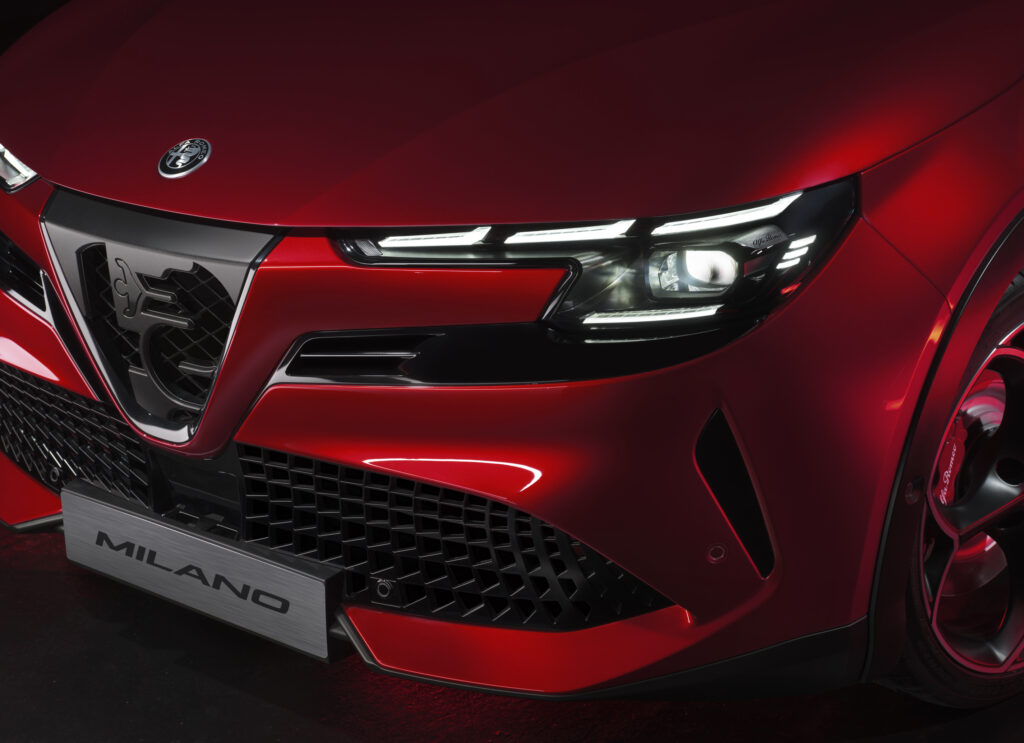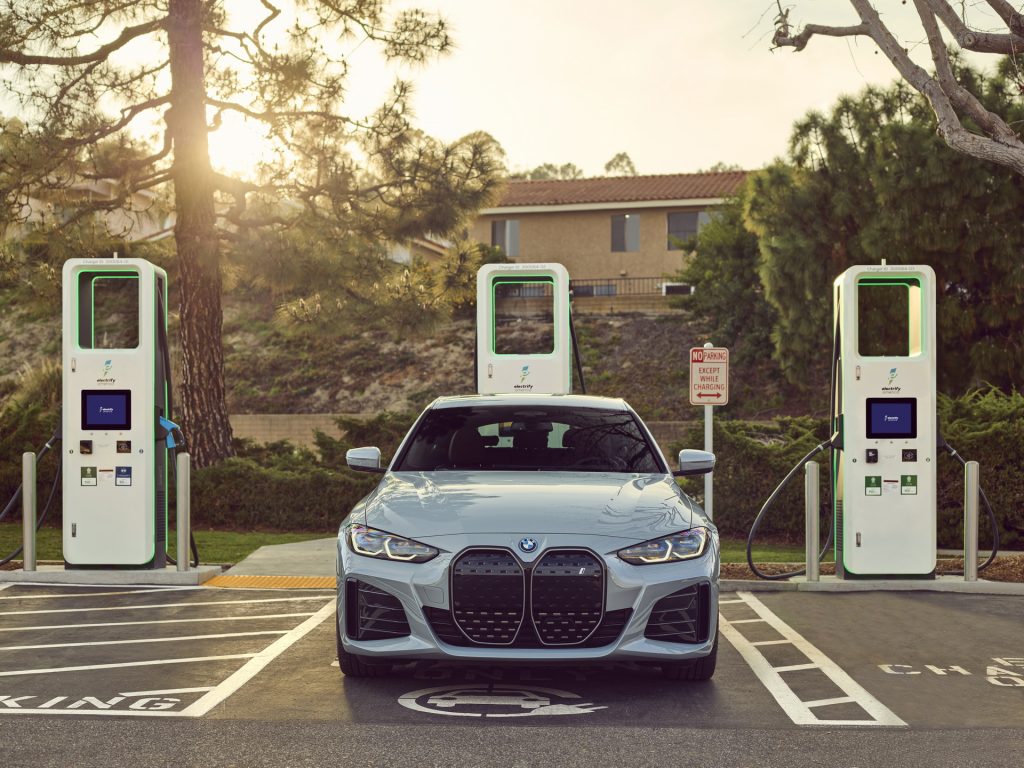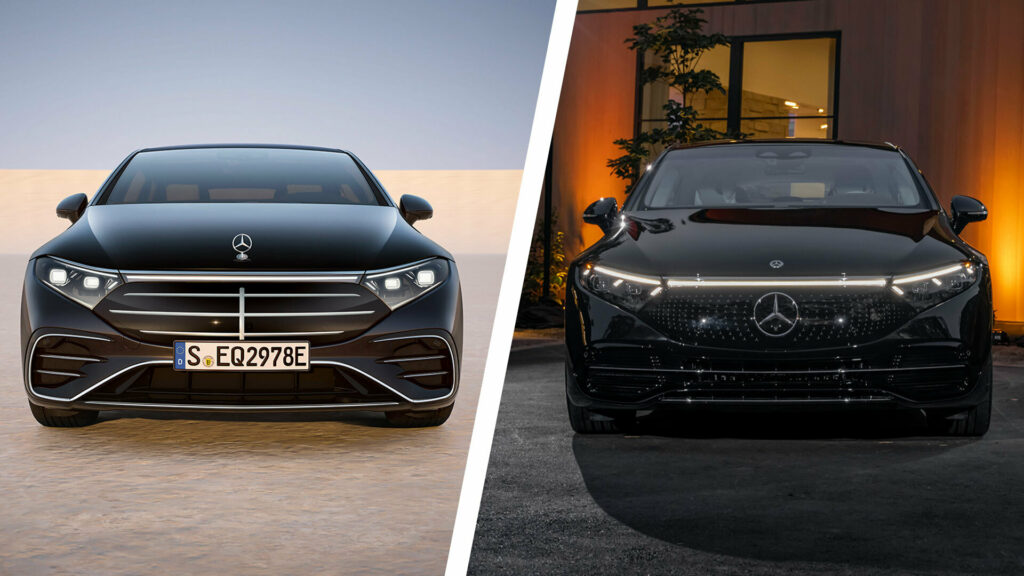- Automakers continue to experiment with grilles in the electric era.
- The Mercedes EQS recently received a facelift that adopts a more traditional looking grille as well as a new hood ornament.
Grilles play an important role as they can be functional as well as an identifying mark. Some even become iconic as everyone’s familiar with Jeep’s seven slot grille.
While grilles have graced cars for more than a century, they’re not necessary on electric vehicles. This has freed designers to be more adventurous, but results have been mixed.
More: The 2025 EQS Actually Looks Like A Mercedes Now
Mercedes effectively waved the white flag with the facelifted EQS, which replaces an anonymous black panel with a more traditional looking grille that closely echoes the S-Class. It’s a welcome change, although the ‘bar of soap’ body remains.
Mercedes isn’t the only automaker mixing things up as the Alfa Romeo Milano Elettrica has an aggressive lower intake as well as a partially enclosed V-shaped grille. The latter incorporates the brand’s trademark serpent and cross in an interesting fashion.

Besides the unique grille, customers will find a 54 kWh battery as well as outputs of 154 hp (115 kW / 156 PS) and 237 hp (177 kW / 240 PS). This enables the crossover to travel up to 255 miles (410 km) in the WLTP cycle.
Even suppliers are playing around as Hyundai Mobis recently introduced their Integrated Front Face Module. It brings the grille into the modern era as it’s focused on aerodynamics instead of just cooling. This has practical benefits as the company suggested the grille could increase electric vehicle range by approximately 12.4 miles (20 km).
With all that being said, what direction should automakers take? Should they use a fully enclosed version of their traditional grille or adopt something more adventurous?









